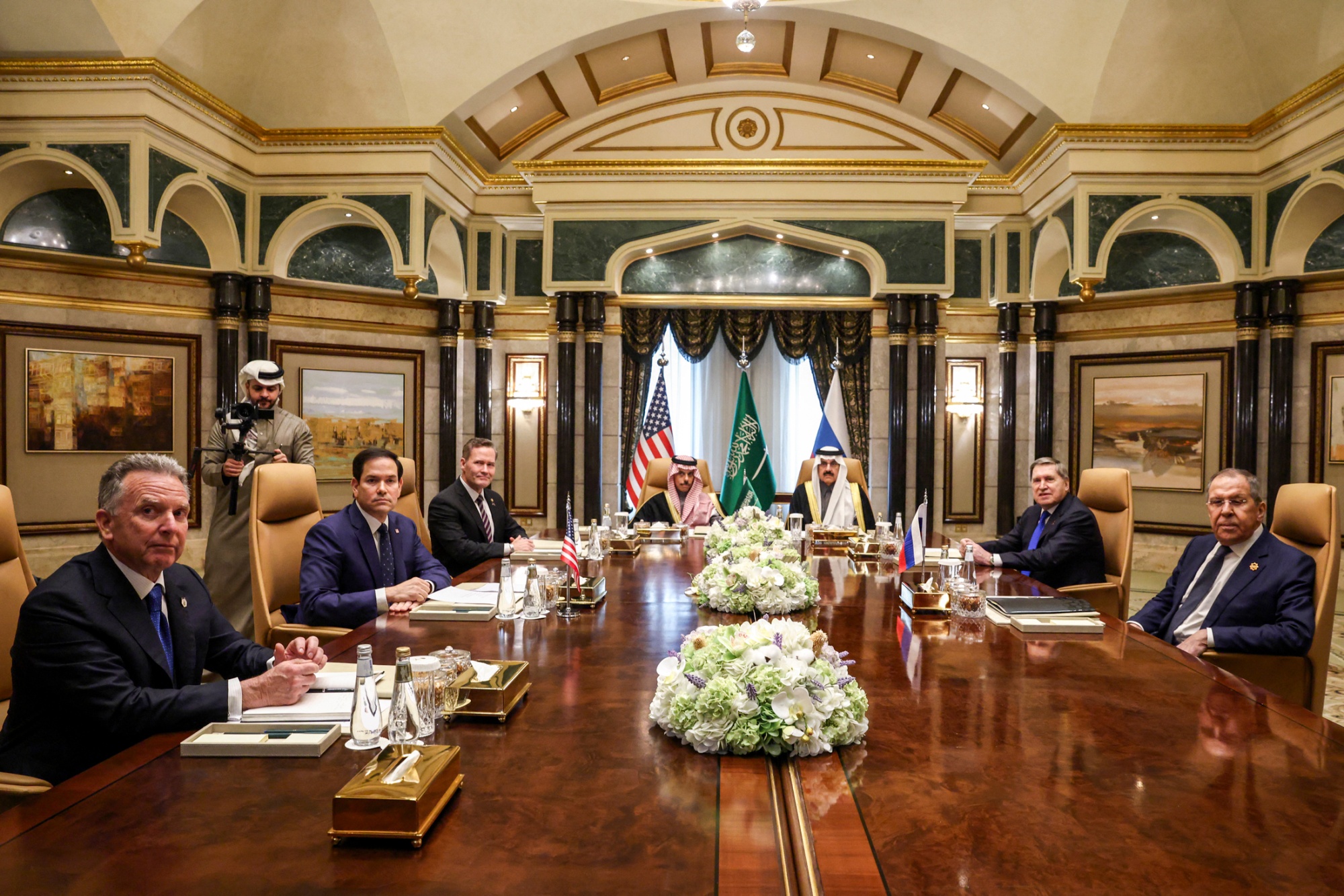
Treasury traders are heading to the sidelines amid uncertainty over an expanding global trade war, sending one measure of volatility to its lowest level in three years and leaving yields rangebound.
Neutral positioning in Treasuries among JPMorgan’s clients stood at its highest level this year, the bank’s survey showed on Wednesday. The shift comes as fluctuating US trade policy leaves little clarity on how proposed tariffs could impact the trajectory of US inflation, raising the risks of traders being wrongfooted on market bets.
In his latest trade salvo, US President Donald Trump said on Tuesday he would likely impose tariffs on automobile, semiconductor and pharmaceutical imports of around 25%, with an announcement coming as soon as April 2. Trump previously threatened tariffs on Canada, Mexico and Colombia, only to pull back, raising the possibility his latest proposal is also a bargaining tool.
“We don’t know what tariffs exactly look like and every day changes,” said Lindsay Rosner, head of multi-sector fixed income investing at Goldman Sachs Asset Management.
Traders taking directional bets off the table have helped keep US yields in a tight range in recent weeks. The benchmark US 10-year Treasury yield continues to straddle a 4.5% handle, near the middle of this year’s 4.38% to 4.81% range. At the same time, one measure of rates volatility – the 3-month/2-year swaption, which reflects implied volatility via option prices – has dropped to its lowest levels since January 2022.
A narrower range of Fed policy outcomes may also be keeping yields in a tighter range. Front-end Fed swaps continue to trend toward just one more full quarter-point of central bank easing for this year.
In listed options, the short volatility theme has also been well represented, with trades this week focusing on sellers of strangle and straddle positions across both SOFR and Treasury options, as traders look to take advantage of the current low volatility backdrop. The theme continued Wednesday with a $3 million short volatility trade.
Here’s a rundown of the latest positioning indicators across the rates market:
JPMorgan Treasury Client Survey
In the week up to Feb. 18, JPMorgan clients cut both long and short positions, boosting outright neutral positioning to the highest level seen so far this year. Outright shorts dropped 6 percentage points and outright longs dropped 2 percentage points over the week.
Treasury Options Premium
Options hedging premium in Treasuries has flipped to favor traders paying-up to hedge a rally in the long-end of the curve, to the highest price since the middle of last year. That is according to the put/call skew on long-bond futures, which has risen significantly over the past week as 30-year yields continue to find strong resistance at 4.9%, ahead of 5% into any selloff. The put/call skew on 2-year, 5-year and 10-year Treasury options has remained close to neutral over the past week. Flows over the past week have included a significant amount of profit-taking on a bearish 10-year play in the March puts. Wednesday’s stand out trades included a large call option buyer targeting 10-year yields to drop below 4.52%.
Most Active SOFR Options
Open interest has ramped up over the past week in the 95.75 strike due to new positions such as the SOFR Mar25 95.75/95.815/95.875 call fly and SOFR Jun25 96.00/95.875/95.75 put fly and SOFR Jun25 95.75/95.8125/95.875 call fly. The 95.6875 strike was also heavily traded in the past week due to interest in flows such as Jun25 95.6875/95.875 call spread and the Jun25 95.6875/97.00 call spread. There was a limited amount of position liquidation in the H5, M5 and U5 tenors over the past week.
SOFR Options Heatmap
In SOFR options out to the Sep25 tenor, the most-populated strike remains at 96.00. The past week has seen a jump in demand in positions around the 95.875 strike, which has seen that level rise to the second most populated strike. The 95.625 strike remains heavily populated with recent flows including decent buying in the SOFR Sep25 95.875/95.625/95.375 put fly.
CFTC Futures Positioning
In CFTC data up to Feb. 11 hedge funds net duration long was unwound by approximately 156,000 10-year note futures equivalents with the largest amount of long liquidation seen in the ultra 10-year note contracts, where almost $12m/DV01 of net longs were unwound. Among hedge funds, around 77,000 10-year note futures equivalents to net short duration position was covered. Largest amount of short covering was seen in the ultra 10-year note futures for approximately $5.2m/DV01 in risk.
— With assistance from Liz Capo McCormick


